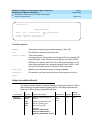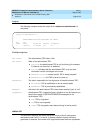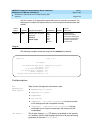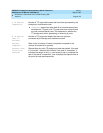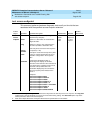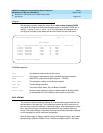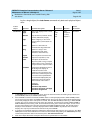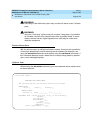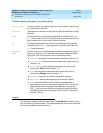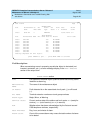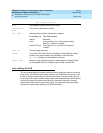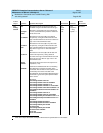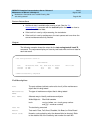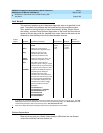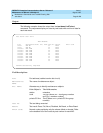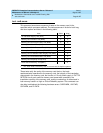
DEFINITY Enterprise Communications Server Release 6
Maintenance for R6vs/si
555-230-127
Issue 1
August 1997
Maintenance Commands and Trouble-Clearing Aids
Page 8-320test alarms
8
Field descriptions (Hardware Test Alarm Query)
Output
The following example shows the output from the test alarms command (query
form left empty by pressing
ENTER). The responses display on a test-by-test basis
with one line of data for each test result.
Alarm Types The type of alarm to be tested: put y or n in the field(s) to selects one
or a combination of alarms.
Interval Tests alarms for the last hour (h), last day (d), last week (w) or all (a)
[default].
From Test alarm from the specified time specified (
mm
/
dd
/
hh
/
mm
). If no
from date is entered, then no checking is done and the alarms active
since a month prior to the current time are reported.
To Test alarms associated with records to the specified time specified
(
mm
/
dd
/
hh
/
mm
). If no to date is entered, any alarm active after the
from date is selected.
Equipment
Type
The technician can choose between five different equipment types. If
there is no input to any of these fields, the system defaults to all the
equipment. The user can select one of the following fields:
■ Cabinet: tests alarms associated with a particular cabinet (1-3).
■ Port Network: tests all alarms associated with a particular port
network (1-3).
■ Board Number: tests all alarms associated with a particular
circuit pack (PCss, default cabinet = 1).
■ Port: tests all alarms associated with a particular port on a
circuit pack (PCsspp, default cabinet = 1).
■ Category: Alarms for a particular equipment category
■ Extension: Alarms associated with an extension number
■ Trunk (group/member): tests all alarms associated with a
particular trunk group or trunk group member,
XX
/
YY
, where the
group identifier tests all alarms associated with a trunk group
(
XX
/__), and the group identifier
and
member identifier are both
entered to test all alarms associated with a specific trunk group
member (
XX
/
YY
).



